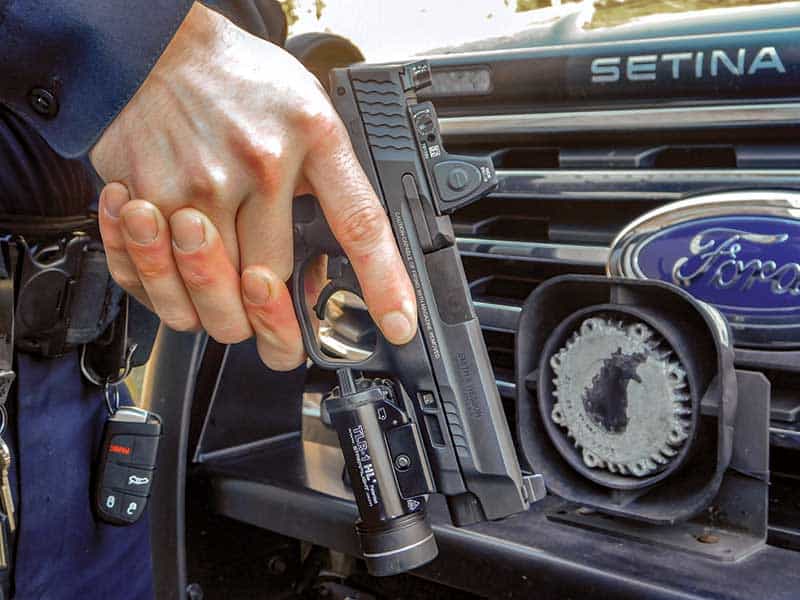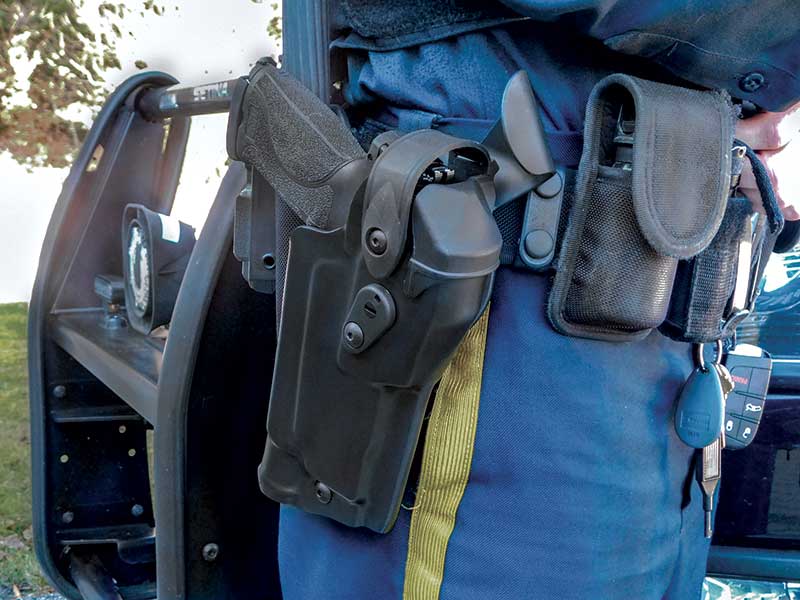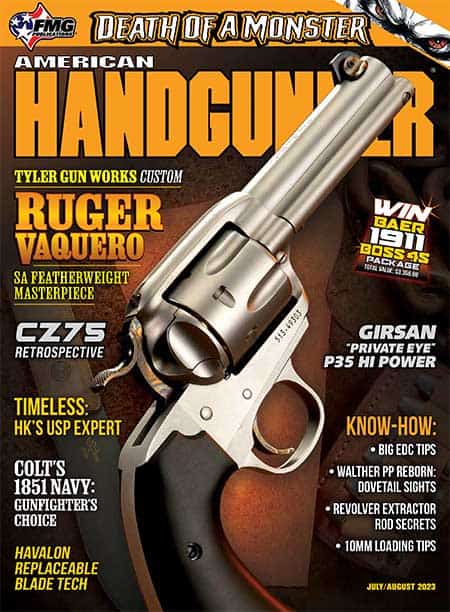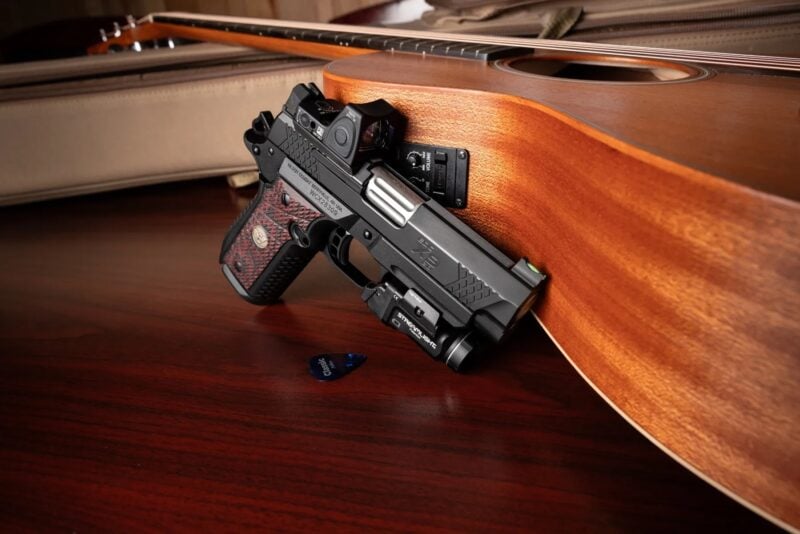Going Red Dot:
An Analytical Approach
Red dot optical sights are the hottest police service pistol trend in America today. Not surprisingly, how to train with them has become an equally hot topic among law enforcement instructors. When the Grantham, New Hampshire Police Department decided to make the switch, it had at the helm a chief who had been a firearms instructor for many years. Chief John Parsons explains, “We had been very happy with the S&W M&P45s we had issued since 2015. We chose to replace them with the M&P 2.0 optics ready pistol, in the same .45 ACP caliber, with 4.5″ barrel and suppressor-height night sights.”
Why stay with .45 at a time when American police are returning in droves to the 9mm? Parsons explains, “Our officers are confident and competent with their .45s. In our jurisdiction, we’ve had to put down moose hit by vehicles, and we also have black bears. Moreover, the M&P45 is standard issue for our state troopers, with whom we work daily.” GPD’s issue duty load is 230-grain Federal HST, which has earned a splendid reputation for getting its job done.
However, holsters became an issue. Holster makers don’t find it profitable to build scabbards for less popular guns. Safariland made the .45 holsters in the 6360 model, which had served the department well for years, but did not offer a model for an optic-equipped S&W .45.
Finding A Holster
Through a process of elimination, Captain Vincent Cunningham determined that a Safariland 6360 RDS holster for the SIG P320 RX would exactly fit the S&W M&P45 2.0 with a Trijicon RMR mounted. Some of today’s instructors are horrified at the idea of putting a Brand A pistol into a holster built for a Brand B, but older heads remember when a department might replace a Model 686 S&W L-Frame service revolver with a Ruger GP100 and use the exact same holsters and speedloaders as before since they all fit perfectly.
The issue was not what gun the holster was originally built for but whether the new gun fit properly. GPD determined that it did. No slop. No snag. No impingement on the trigger.
The department ordered the 6360 RDS ALS/SLS Mid-Ride Levell III retention duty holsters, and the new issue pistols fit perfectly with the same Streamlight TLR-1-HL lights that had ridden on the first-generation M&P45s, but now accommodating the RMR sight atop the pistols. The Safariland design shields the optical sight until the retaining device is released. This is an important consideration in a four-season climate where an officer might be outdoors for hours at an accident scene or during a manhunt in heavy rain or worse, falling snow, which could build up on the back of an optical sight in a holster that did not protect the lens.
Training
Virtually every agency making this switch has discovered there is a learning curve when optical pistol sights are adopted. Grantham PD saw this coming and met the challenge.
Grantham is easy driving distance from Exeter, NH, where the SIG Academy is located. Parsons reports, “Over that summer, I sent us all through the SIG SAUER Pistol Mounted Optics 102 one-day course. We are all going through the 103 course (two days) as well.” By the time you read this, Sergeant James McKenna and Chief Parsons himself will have gone through the SIG Academy’s Pistol Mounted Optics Instructor Course.
Upon initial issuance of the new hardware, each officer sighted in the RMR at 15 yards. A hundred rounds per officer were spent initially with draw-to-the-shot drills at various distances to acclimate to “finding the dot.”
Since the initial training, officers have spent plenty of time on qualifications in both day and night shooting. The advantages of the red dot were particularly evident in the latter application. Officers were already familiar with red dot sights on their issue patrol rifles and quickly acclimated to placing the dot with “target focus.” Noted Parsons, “I can really only speak for myself, but I found I was faster on target at distance, and it was easier to pick up the red dot with my ‘seasoned’ eyes.” Overall, acceptance of the new equipment by personnel was overwhelmingly positive.
Staying with the same firearms platform and the same type of holster helped to make the transition seamless. Grantham’s experience indicates that the key to a successful transition from iron sights to RDO on service pistols lies in planning and training.






